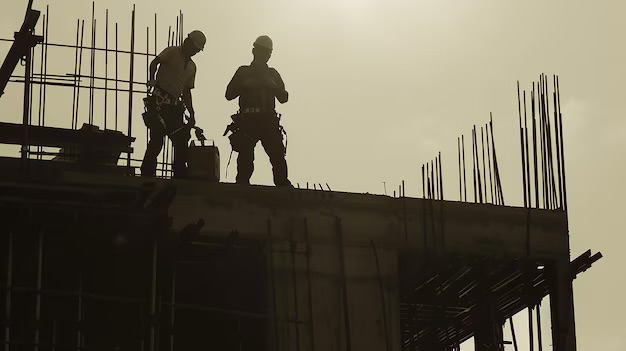Eco-Friendly Practices Within The World of Construction

Real Leaders in the Conscious Construction World
In the ever-evolving world of construction, sustainability has evolved from a buzzword to a driving force shaping the industry's future. Reflecting on the highlights that reshaped the sector in 2023, a remarkable surge in sustainable practices stands out, making it more environmentally friendly, socially responsible, and economically viable. Below are two globally renowned construction companies that also pace the way as leaders in conscious contruction.
“Turner Construction Company” - Eco-Friendly Pioneer
Turner Construction Company, a leader in eco-friendly practices, emphasizes sustainable building materials, energy-efficient technologies, and waste reduction. Integrating LEED certification into projects showcases a commitment to high environmental standards. Turner collaborates with suppliers to source eco-friendly materials, setting a benchmark for responsible resource consumption. They are a prime example of how construction companies can prioritize sustainable materials by working closely with supplies to identify and use materials with low environmental impact.
“Skanska” - Net-Zero Emissions Ambition
Skanska, a global construction company, aims for net-zero carbon emissions by 2045. Focusing on reducing carbon emissions throughout projects' lifecycles, Skanska integrates renewable energy sources, energy-efficient technologies, and green infrastructure. This comprehensive commitment addresses climate change. Companies can follow Skanska's example by setting clear targets for carbon neutrality, adopting renewable energy sources, and actively measuring and offsetting carbon emissions.
Example of Negative Eco Practices
“XYZ Construction” - Disregard for Eco-Friendly Practices
Contrastingly, XYZ Construction Company lacks commitment to eco-friendly practices, opting for conventional building materials, neglecting energy-efficient technologies, and lacking proper waste management. This disregard contributes to environmental degradation, higher resource consumption, and negative impacts on local ecosystems. Sadly, and not unsurprisingly, the negative consequences lie heavily in environmental impact. Construction companies neglecting eco-friendly practices harm the environment, contributing to deforestation, increased carbon emissions, and resource depletion. This poses risks to the long-term sustainability of the construction industry, leading to reputational damage.
Green Construction Trends, Market Insights, and Southern California Impact
The Global Green Building Material Market reached USD 285.4 Bn in 2022, projected to surpass USD 768.8 Bn by 2032, with a CAGR of 10.7% from 2023 to 2032. Construction companies utilize green building materials for eco-friendly construction, providing benefits like greater design flexibility, energy conservation, and lower costs for space configurations. These materials promote recycling and the use of reclaimed materials, reducing the carbon footprint of construction activities.
Key Takeaways from Green Building Material Market:
- Structural type leads, covering the major revenue share.
- Roofing dominates the application segment.
- North America holds a major revenue share of 36% (2022).
- Asia Pacific market anticipates a significant CAGR of 12% over the forecast period.
Green buildings reduce energy consumption and the need for artificial heating and cooling, resulting in decreased costs, carbon emissions, and improved sustainability. The use of green building materials contributes to enhanced indoor air quality, creating healthier living and working environments.
Factors Affecting Growth:
- Growing environmental awareness globally.
- Supportive governmental initiatives promoting green building materials.
Top Trends in Global Green Building Material Market:
- Green roofs and walls gain popularity for energy efficiency and aesthetic appeal.
Market Growth:
- Rising demand for environmentally favorable and sustainable products.
- Green building materials offer a distinct selling factor, meeting consumer demand.
Regional Analysis:
North America leads, driven by green building codes and standards. Asia Pacific is expected to grow significantly, driven by an increasing population and demand for sustainable materials.
Competitive Landscape:
Major players include BASF SE, Owens Corning, Forbo International SA, Alumasc Group Plc, and more.
The sustainable efforts shaping construction in 2023 and the green building material market insights signify a shift towards a more responsible and resilient industry. Stakeholders recognizing the importance of sustainable practices set the stage for a construction sector meeting present needs while ensuring a sustainable legacy for generations to come. Embrace these trends, and together, let’s build a future that is not just constructed but conscientiously crafted for a better world.
The Impact of Eco-Friendly Construction Practices in Southern California
In the ever-evolving world of construction, where projects shape skylines and communities, the choice of contractors holds immense significance. For general contractors in Southern California, adopting an eco-friendly approach is not just a trend but a responsibility towards the environment and future generations.
Sustainable Construction Practices and Intentionally Building a Better Future
Eco-friendly construction contractors prioritize sustainable practices, ranging from the use of recycled materials to the implementation of energy-efficient technologies. These conscientious choices contribute to a greener and healthier planet, promoting responsible resource consumption within the construction industry. Beyond sustainable practices, eco-conscious contractors like Turner Construction Company make a significant impact through nonprofit donations. Financial contributions or donations of unused construction materials support environmental causes, community development, and social initiatives. Aligning with nonprofits showcases a commitment to giving back and fostering positive change in the broader community.
Southern California's Unique Landscape
In Southern California, where sun-kissed landscapes meet urban development, the need for eco-friendly construction is amplified. Balancing growth with environmental conservation is crucial for preserving the region's natural beauty and combating the challenges posed by climate change. Recognizing that the choices made today ripple into the future, eco-friendly practices extend to fostering climate change awareness for the next generation. Involving young minds in the importance of eco-friendly practices creates a culture of consciousness. By selecting environmentally responsible contractors, we set an example for the youth, inspiring them to make eco-conscious decisions in their endeavors. Eco-friendly construction isn't just about the environment; it's about the triple bottom line—people, planet, and profit. Choosing contractors committed to sustainability not only benefits the environment but also enhances the reputation and profitability of construction projects.



.svg)
